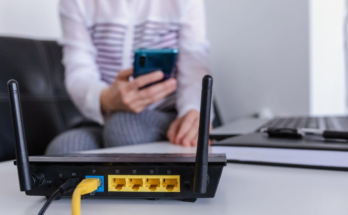When it comes to video games, I don’t pay much attention to previews (or pre-release controversy), so all the online drama surrounding Cyberpunk 2077—the incredibly hyped action RPG that drops Wednesday at 4 p.m. PT—has blissfully passed me by. However, there’s one problematic part of the game that’s worth knowing about before you fire it up: If you have epilepsy, parts of Cyberpunk 2077 might trigger a real-life medical issue.
In fact, they already have: Game Informer associate editor Liana Ruppert has been playing a copy of the game for the past week and a half or so, and her experience has been pretty shocking:
“Since seizures have become my new norm, I often make sure to pay special attention to certain design choices that can be harmful to those sensitive to neurological traps so that I can decide for myself if something is safe to play, decide if there is a way to work around those obstacles, and try to offer some navigational tools for others that may be facing the same roadblock.
During my time with Cyberpunk 2077, I suffered one major seizure and felt several moments where I was close to another one. I kept going because I made that decision to, and I feel like that decision helped me sort of slap together a small little guide for players wanting to take part in this game for fear of missing out.”
You shouldn’t have to worry about seizures when playing video games, no matter your personal health history. Full stop. No gaming experience is that important, nor should any developer assume that their game doesn’t need some kind of accessibility setting to prevent this from happening.
Cyberpunk developer CD Projekt RED is going to investigate this option, and is planning to add a special warning about epileptic seizures into the game (that wasn’t present when I wrote this article). There’s no timeline as to when either might appear, though. It’s possible that neither option will be present at launch.
G/O Media may get a commission
This means that the only way most people might know they are heading for a potential medical situation is if they read through the fine print of the game’s EULA, which nobody ever does. In there, you’ll find this warning way down in section 3.2:
“Cyberpunk 2077 may contain flashing lights and images, which may induce epileptic seizures. If you or anyone in your household has an epileptic condition, please consult your doctor before playing Cyberpunk 2077. If you experience dizziness, altered vision, eye or muscle twitches, loss of awareness, disorientation, any involuntary movement, or convulsions while playing, immediately discontinue use and consult your doctor.”
But even that “solution” is junk, if you ask me; it puts the onus of “dealing with” gameplay on the player, when it should really be the game itself that comes with a mechanism for reducing or eliminating graphical elements that could trigger seizures. That doesn’t seem like an outsized ask for launch day, and it would ensure a more inclusive experience for all players.
Which parts of Cyberpunk 2077 could trigger an epileptic seizure?
If you have epilepsy, the only alternative if you want to play Cyberpunk 2077 is to avoid the portions of the game that can trigger an unwanted reaction. Unfortunately, given the game’s theme, a number of them are unavoidable (and some, more potentially seizure-inducing than others). As Ruppert describes:
“Due to the nature of interfacing, there is a lot of red glitching animations seen throughout the game’s progression. My monitor has an ‘eye-saving mode’ that dims the blue light in my screen that I often use to help with things like this, and that has helped immensely. During my time with Night City, there were moments when walking into clubs and bars that were immediate ‘danger zones’ for epileptics.”
And then there’s the biggest issue: the game’s “braindances,” which are what actually triggered Ruppert’s seizure. Here’s what they look like in an earlier version of the game, with a bold warning from me that you shouldn’t click on the video if you have epilepsy.
Ruppert advises that you skip these scenes entirely—look away or close your eyes when you see your character getting ready to jump into these Assassin’s Creed-like memory trips. Once you’re in, you’ll want to be delicate with your gameplay. As she explains:
“Once inside of a BD, there are several layers to ‘explore’ the memory, including a soundwave layer, a thermal layer, and a more digitized way of scanning. Each offers specific glitch animations that could be a danger, especially with the digitized layer. While these can’t be avoided for the story, you can pause and play as you wish within these scenarios, making it easier to tailor them where needed, or to call in a gamer backup buddy if absolutely necessary (shoutout to my husband for helping me when the BD’s were longer than usual).”
To round out your Cyberpunk survival guide, here are a few other tips for gaming from the Epilepsy Foundation:
- Work with your doctor to get an EEG test, which can help determine if flashing lights could induce seizures. You’ll then have a better idea of how to then approach media (games, movies, etc.) that could potentially contain triggering content.
- Sit at least two feet from the screen in a well-lit room, and consider reducing the screen’s brightness to help lessen the potential of a photosensitive reaction.
- Cover one eye while playing games—especially during potentially problematic content—rather than blinking rapidly, which could itself trigger a reaction. Alternate which eye you’re covering at regular intervals.



